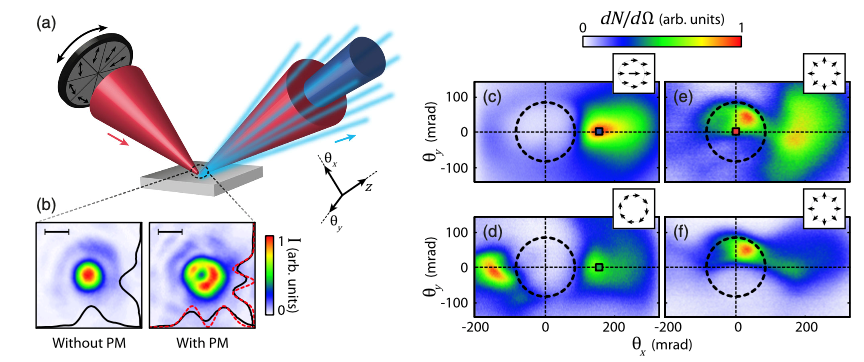Less divergent vacuum-laser-accelerated electron beams with a radially polarized laser
Intense lasers carry the highest electric fields that can be obtained in the laboratory (higher than 10 TV/m). In principle, such fields would make it possible to accelerate electrons at relativistic speeds over a few micrometers. This is the idea behind “vacuum laser acceleration”: charged particles are accelerated directly by the laser field without the need of a material structure such as a cavity or a plasma. However, this method suffers from the fact that the electric field is essentially transverse and oscillating. The transverse field causes the particles, in practice electrons, to be emitted off-axis and yield a particle beam with a very large divergence. Our team has thus proposed to use a laser pulse with radial polarization instead of the usual linear polarization. Indeed, radially polarized beams carry a large longitudinal component of the electric field. This longitudinal field can then be used to directly accelerate electrons, yielding in principle an on-axis narrow-divergence electron beam. We have validated this concept experimentally on the UHI100 laser of CEA Saclay, in collaboration with Fabien Quéré’s team at LIDYL. We were thus able to accelerate electrons to relativistic speed and observed a significant reduction of the divergence of the emitted electron beams [1] when compared to linear polarization.
[1] “Interaction of Ultraintense Radially-Polarized Laser Pulses with Plasma mirrors”; N. Zaim, D. Guénot, L. Chopineau, A. Denoeud, O Lundh, H. Vincenti, F. Quéré and J. Faure, Phys. Rev. X 10, 041064 (2020)



